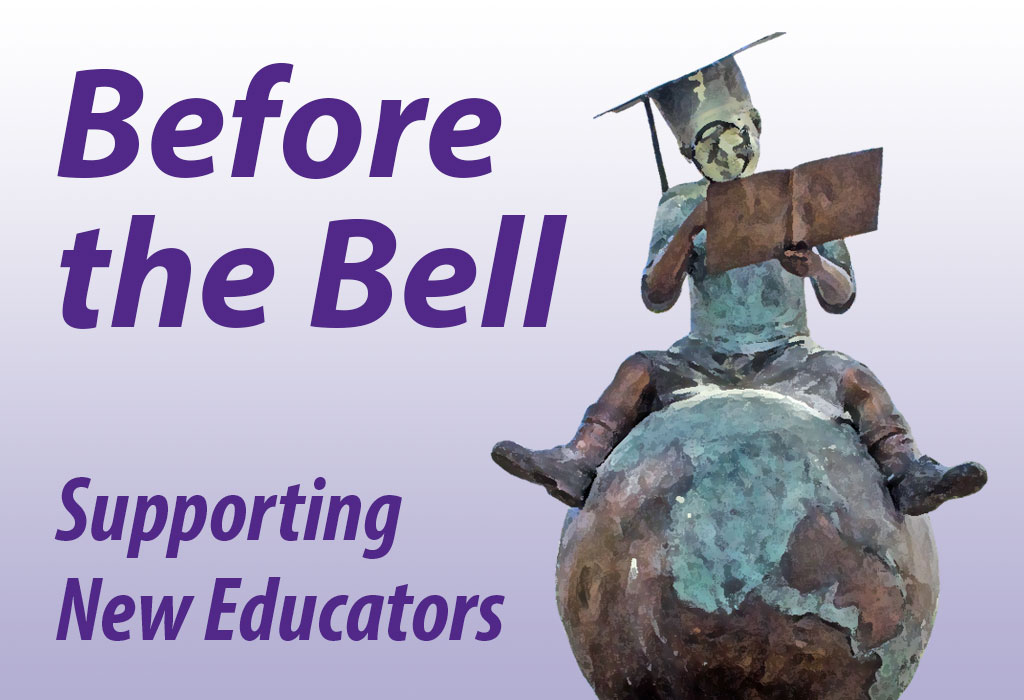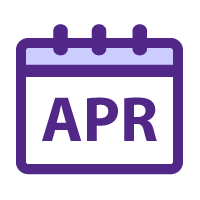Lori Goodson, Editor
Mary Hammel, Technical Editor
Category: March 2016
Some Final Thoughts on Assessments
 It’s March—which means spring rain, a much-deserved break, and assessments! While you may be putting in a few extra minutes in your classes reviewing material for the tests, it’s also a good time for you to consider the achievements your students have made—whether they show up on a test score or not.
It’s March—which means spring rain, a much-deserved break, and assessments! While you may be putting in a few extra minutes in your classes reviewing material for the tests, it’s also a good time for you to consider the achievements your students have made—whether they show up on a test score or not.
As your students take the assessments, know that you have done your best. If you’ve kept a journal for reflection, now’s the time to spend a few minutes flipping through the pages and seeing just how far your students—and you as a teacher—have come.
Take time to reflect upon your teaching, how you’ve prepared your students for these assessment and, most importantly, for succeeding in your class and with your content. Flip through your past lesson plans and make note of what works and what didn’t, what needs improvement and what was successful.
As assessment results come in, make use of that data. Use the results to see how your students have progressed and to determine what general areas you may need to spend more time on or approach in a different way.
Do not, however, judge your teaching abilities based on assessment results. Assessments are only part of the picture regarding your students’ achievements. Ideally, testing would be an absolute way to judge your abilities to help students learn. But veteran teachers and administrators know other factors affect how your students do on the tests.
In The Classroom
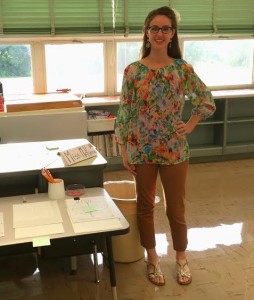
Beth McKinzie has begun her teaching career in Miltonvale, Kan., where she teaches K-12 art for Southern Cloud USD 334.
“This is a very rural area, and I’m enjoying teaching at a school with small class sizes,” she said. “My first year of teaching has been a mixture of emotions. I’m learning so much while teaching art and making a positive impact on my students’ lives in the process. It is always important for me to reflect on each day of teaching and strive to become a better teacher every day. I’m looking forward to the future of my art teaching journey and career!”
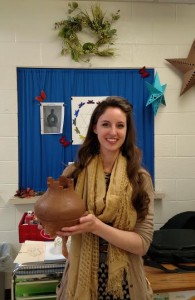
What’s Happening in Bluemont Hall?
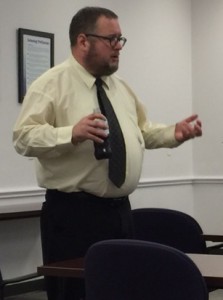
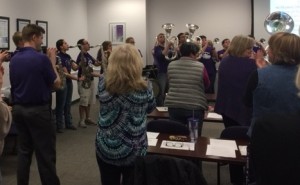
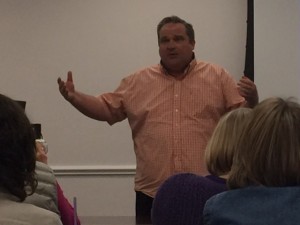
We’d Love to Hear From You! Email Us!
![]() Do you have a question about classroom procedures? Or a suggestion for a topic we should address in Before the Bell? Want to add your name to our mailing list? Or provide a different email for our mailing list? Or, if you’re in your first year of teaching, send us a photo of you at work in your classroom!
Do you have a question about classroom procedures? Or a suggestion for a topic we should address in Before the Bell? Want to add your name to our mailing list? Or provide a different email for our mailing list? Or, if you’re in your first year of teaching, send us a photo of you at work in your classroom!
Second-year teachers, feel free to jump in and offer suggestions to those who are following your career choice!
We’d love to hear from you, so please email us at lagoodson@k-state.edu.
Go, COE Cats!
#WeAreEdCats–Stay Informed!
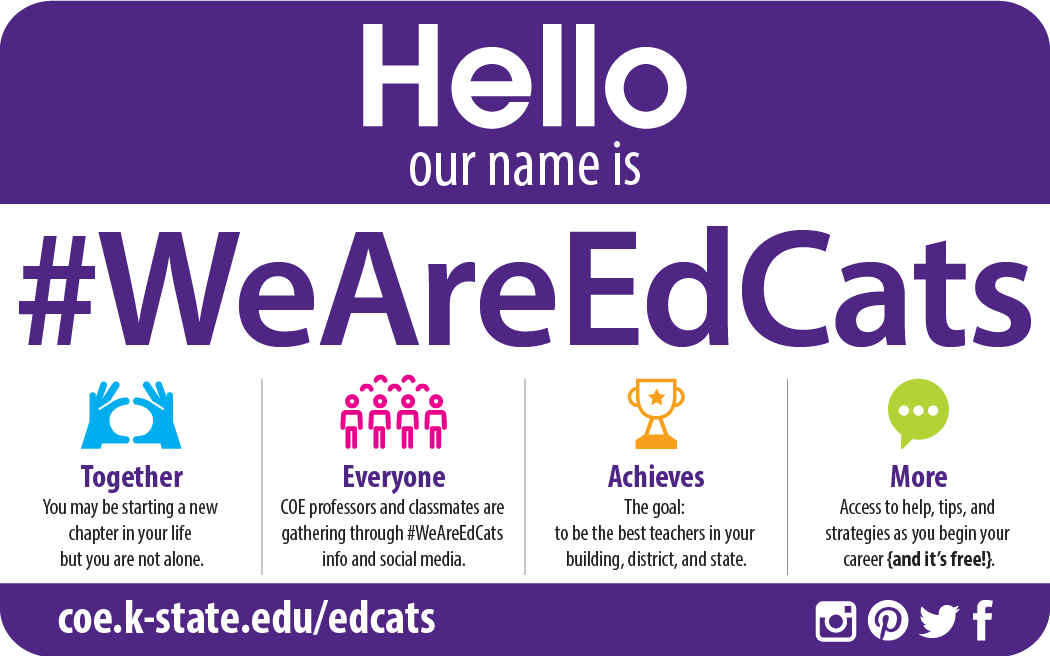 Need another place to go for support and info? Need a little more purple in your life? Then you need to be a part of #WeAreEdCats! Check out the website at coe.k-state.edu/edcats!
Need another place to go for support and info? Need a little more purple in your life? Then you need to be a part of #WeAreEdCats! Check out the website at coe.k-state.edu/edcats!
The Fun Stuff
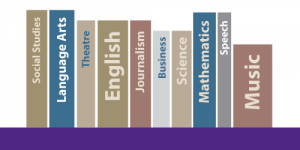 We asked some of your favorite Curriculum and Instruction professors, “What do you think is most enjoyable about teaching this age level/content area?” We think you’ll find their responses provide you with a few smiles…and some motivation to keep up your good work in the classroom.
We asked some of your favorite Curriculum and Instruction professors, “What do you think is most enjoyable about teaching this age level/content area?” We think you’ll find their responses provide you with a few smiles…and some motivation to keep up your good work in the classroom.
Dr. Brad Burenheide (Secondary Social Studies)— “Everything. The content, the kids, it is intellectually stimulating and enjoyable.”
Dr. Sherri Martinie (Secondary Math)— “There are so many applications of the content to the real world. There are definitely opportunities to be creative teaching math. It is also very rewarding when students that have struggled with math start to make sense of things and enjoy learning the subject.”
Dr. Tom Vontz (Elementary Social Studies)— “The honest and sometimes inaccurate and funny interpretations of the world that come from the mouths of little kids.”
Dr. Vicki Sherbert (Secondary English/Language Arts, Speech/Theatre, Journalism)— “We get to bring exciting literacy experiences to our students. Sharing our enthusiasm about books, authors, poetry, drama, etc. with our students is critical to help them develop their own literate lives.”
Dr. Phillip Payne (Music Education)— “The most enjoyable part for me is to see students developing their love and knowledge of music. They learn to take ownership of their musicality and to see that is immensely gratifying.”
